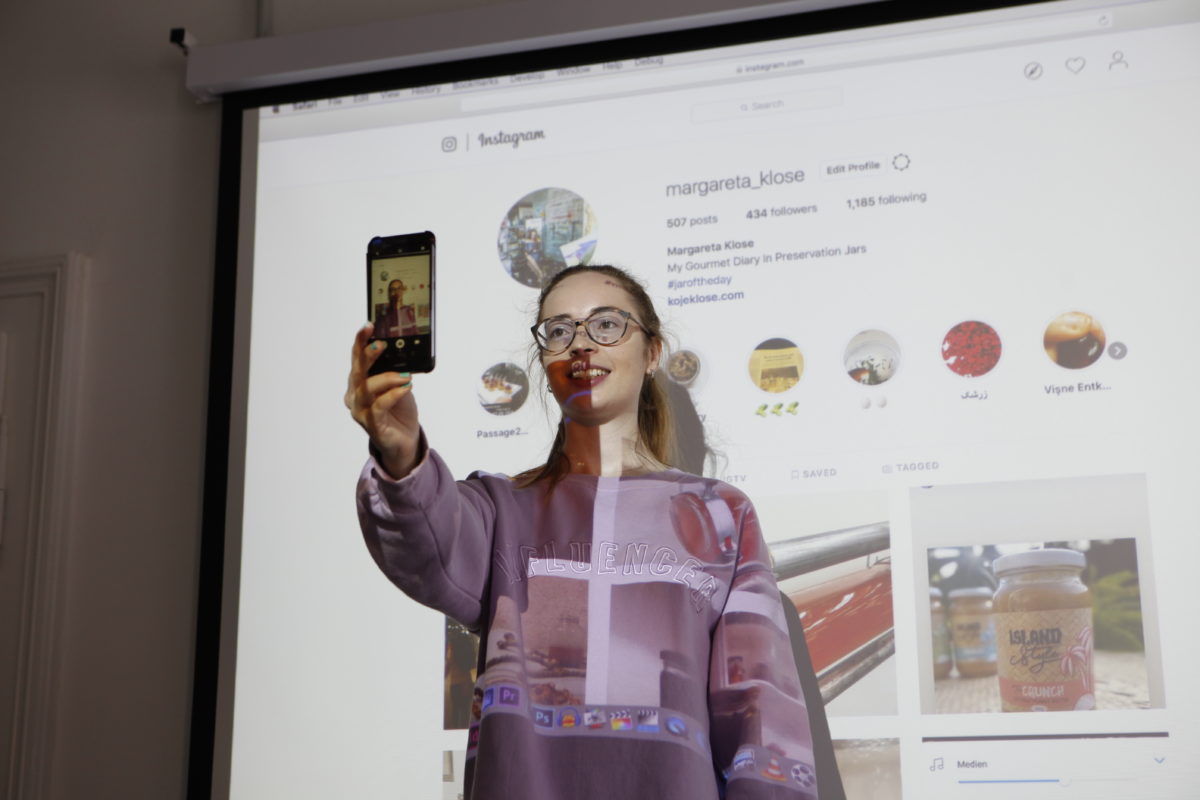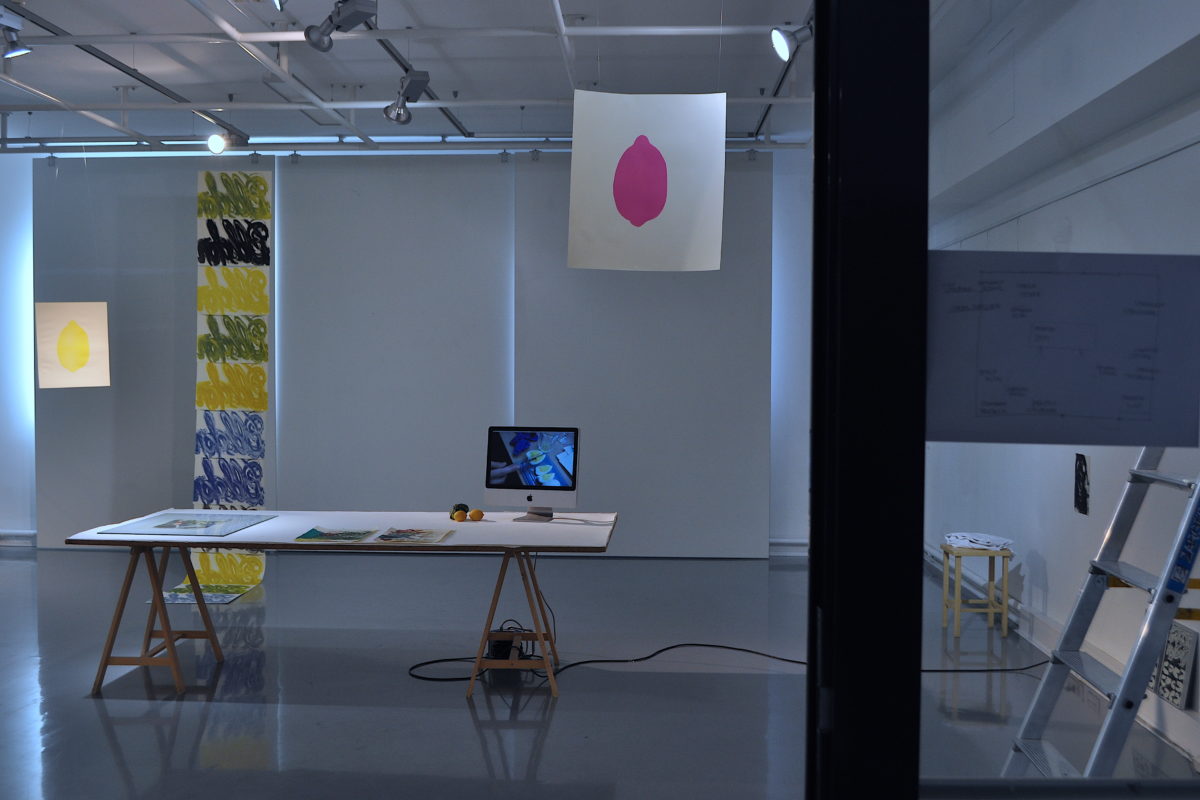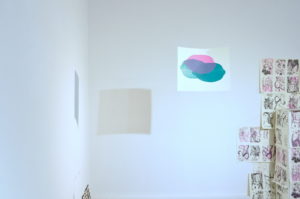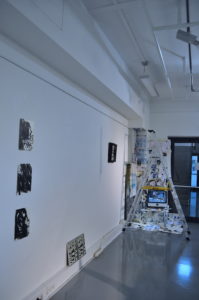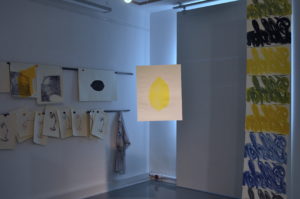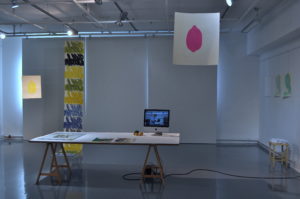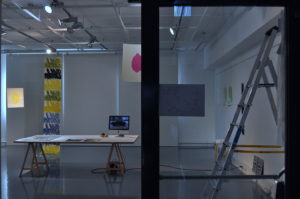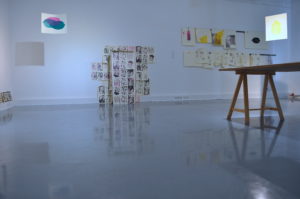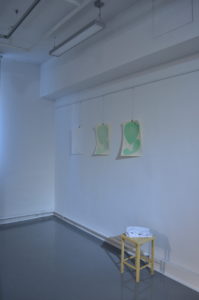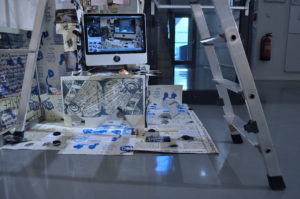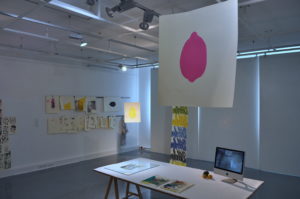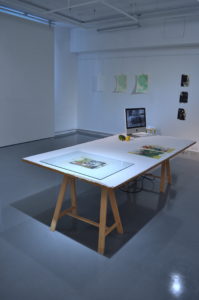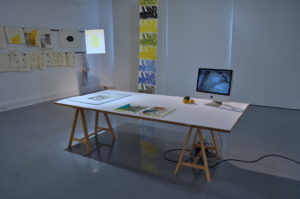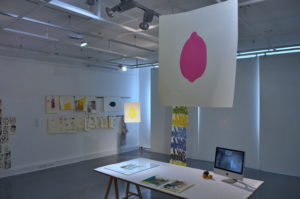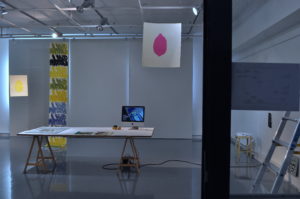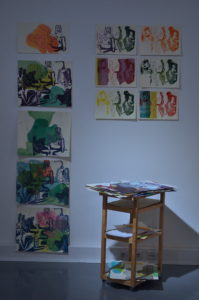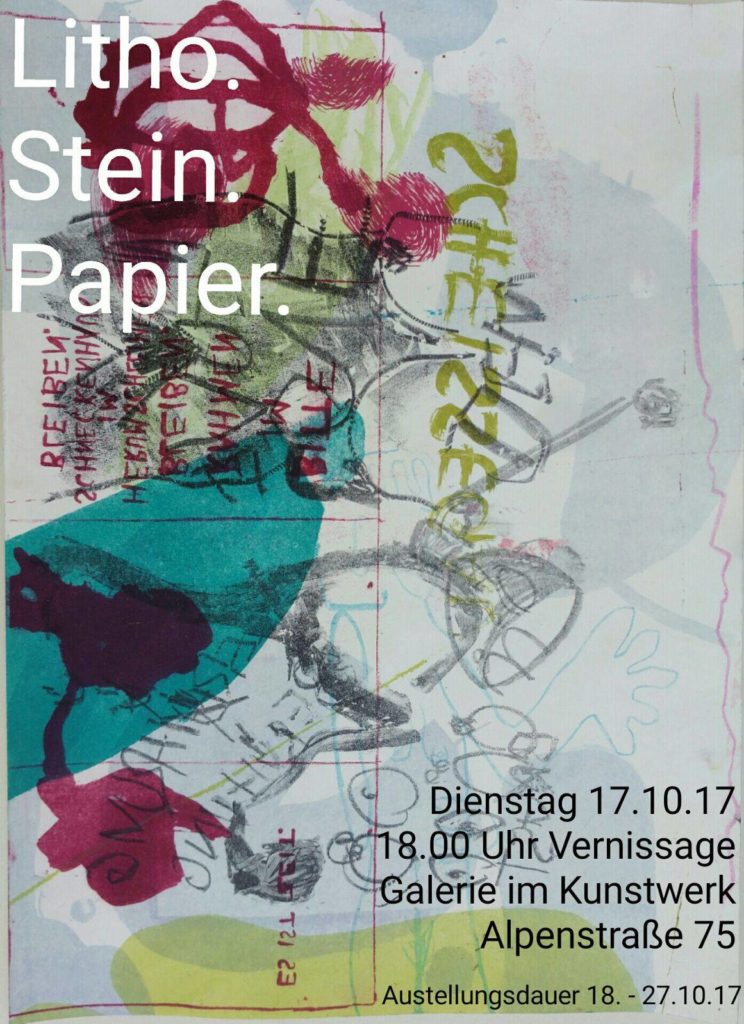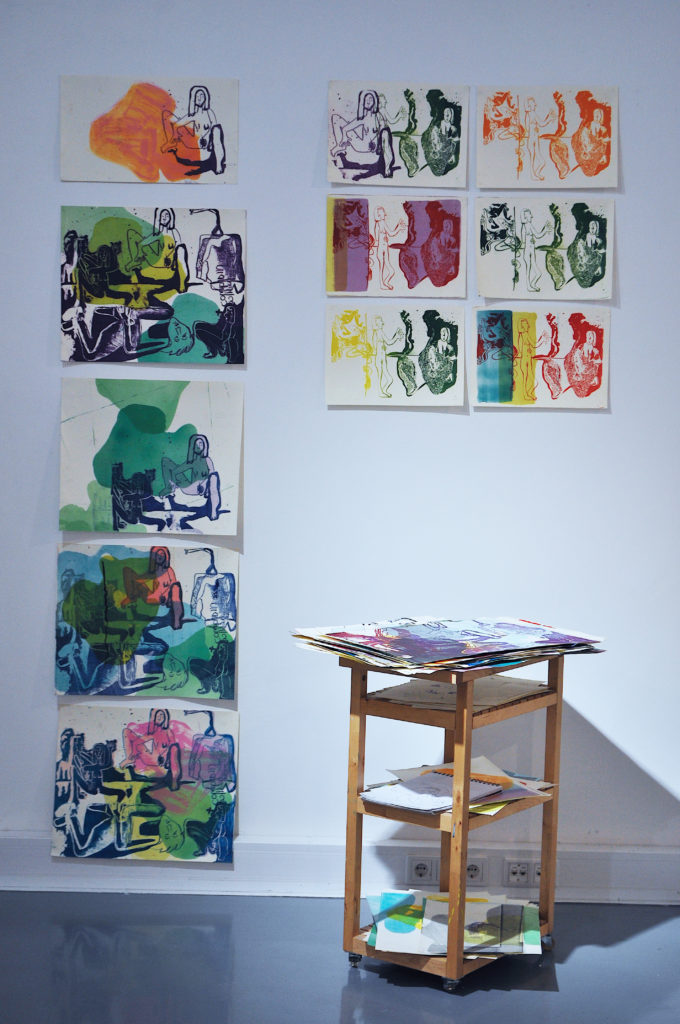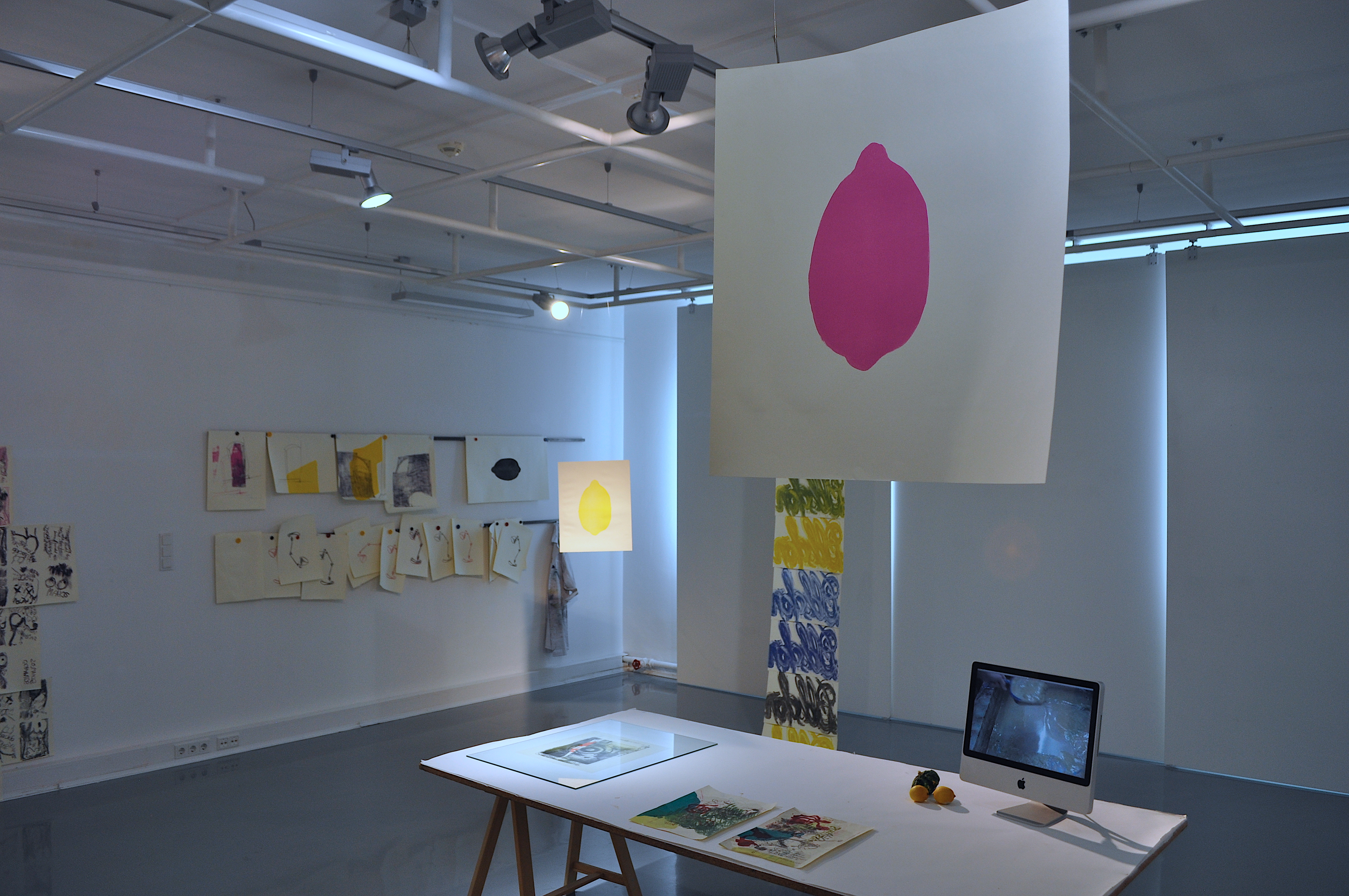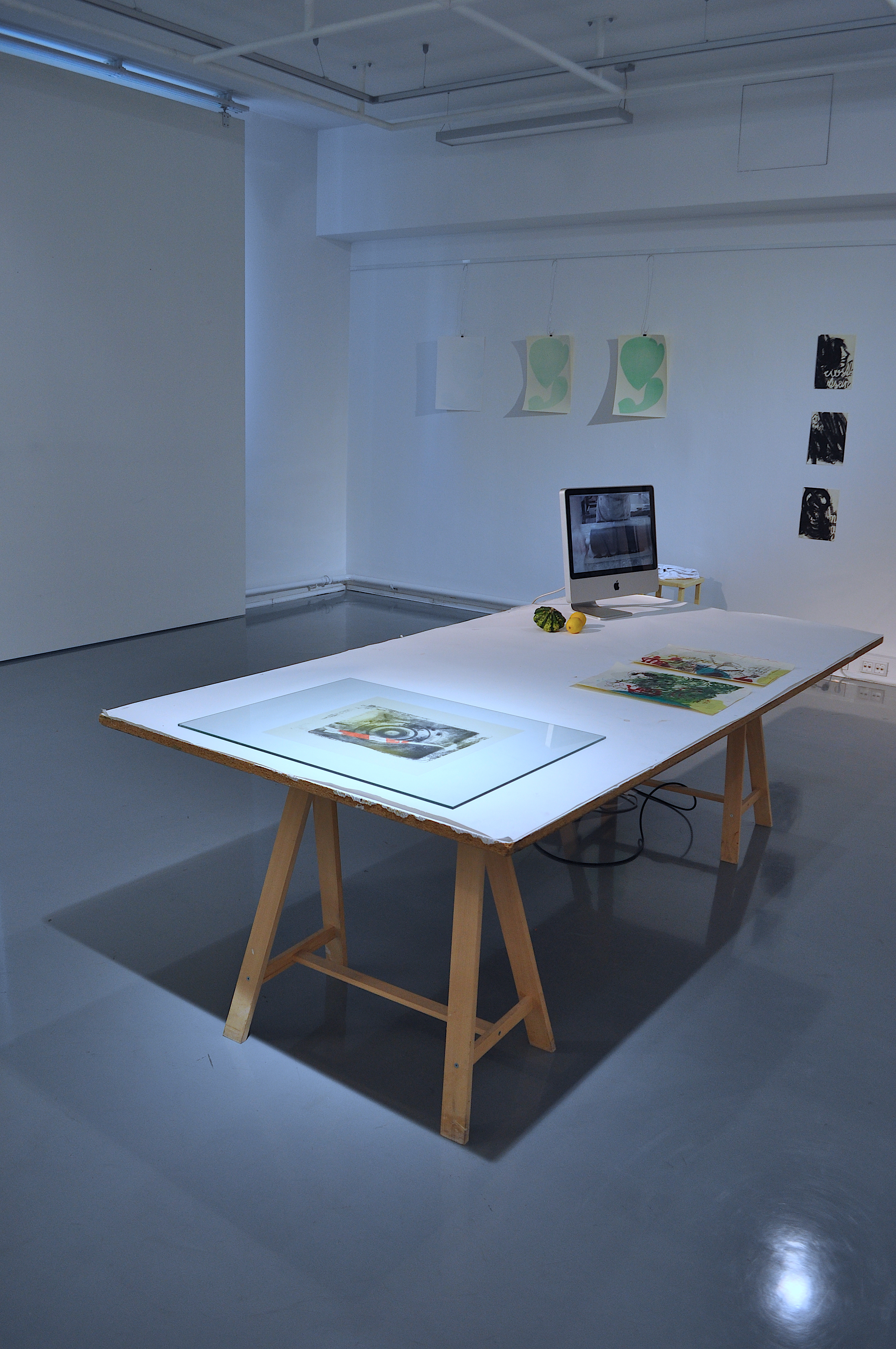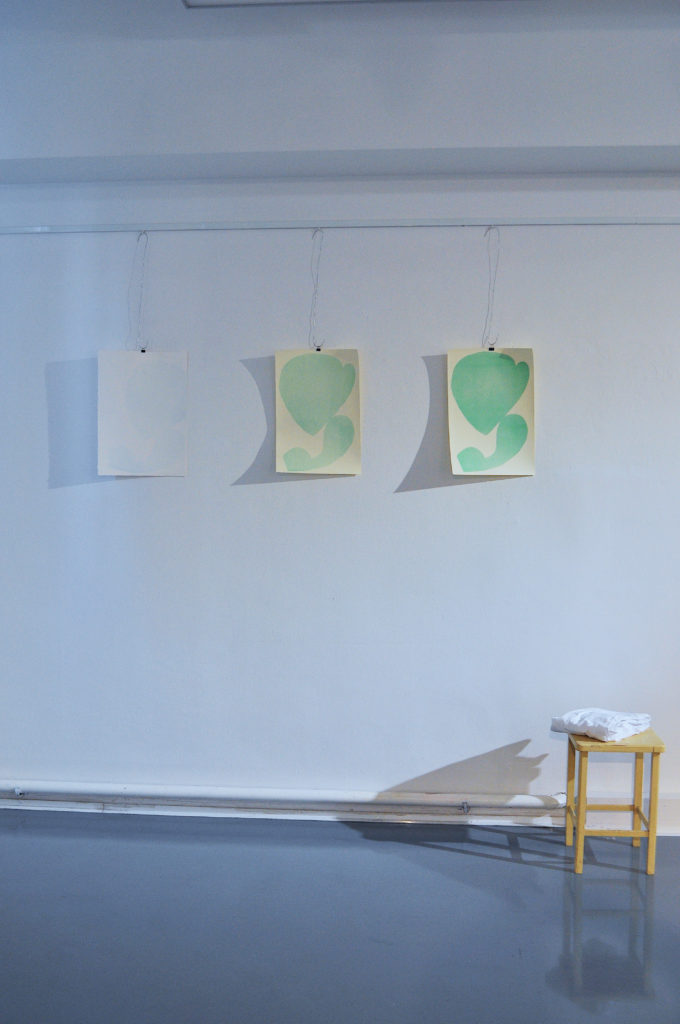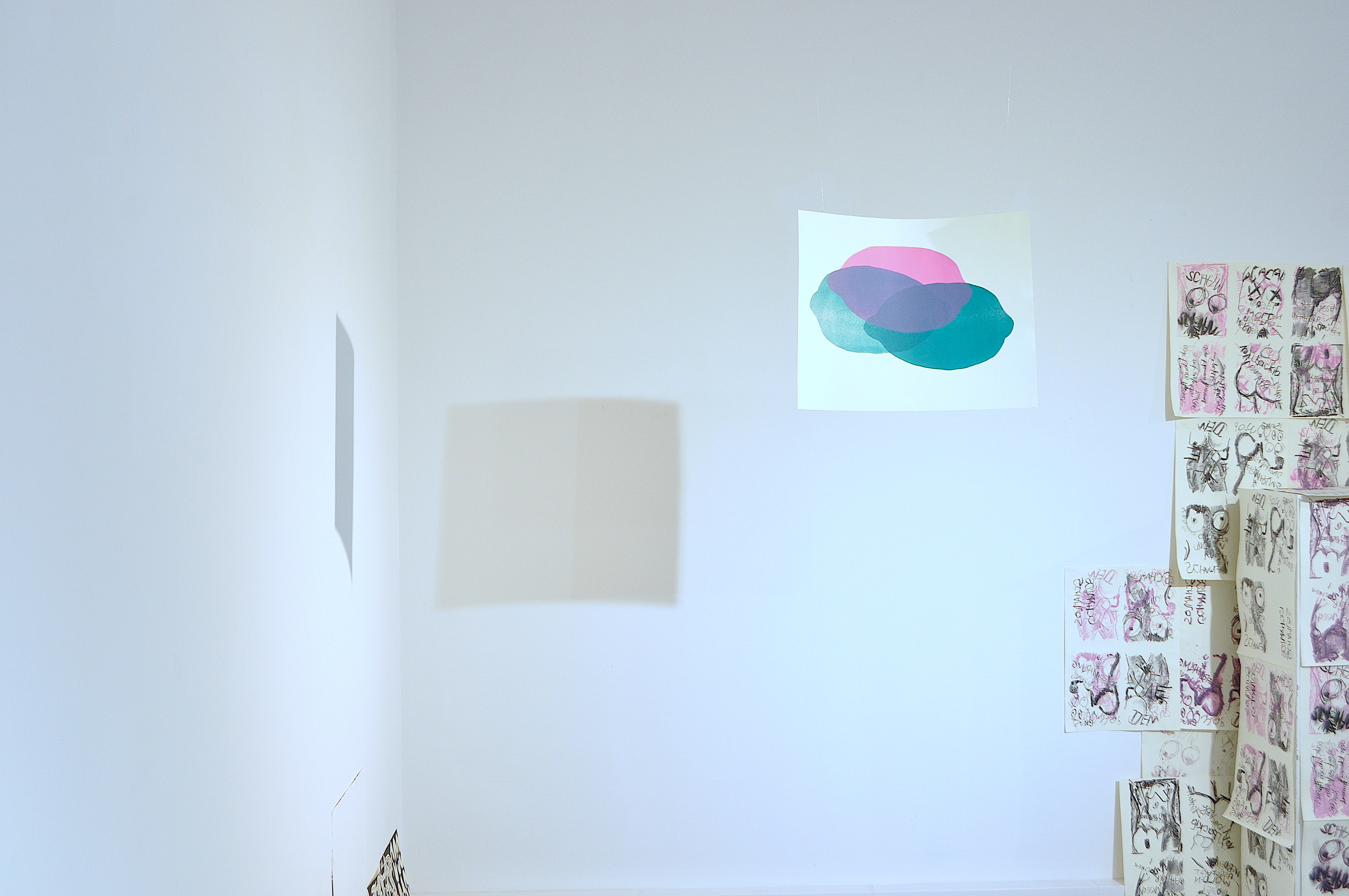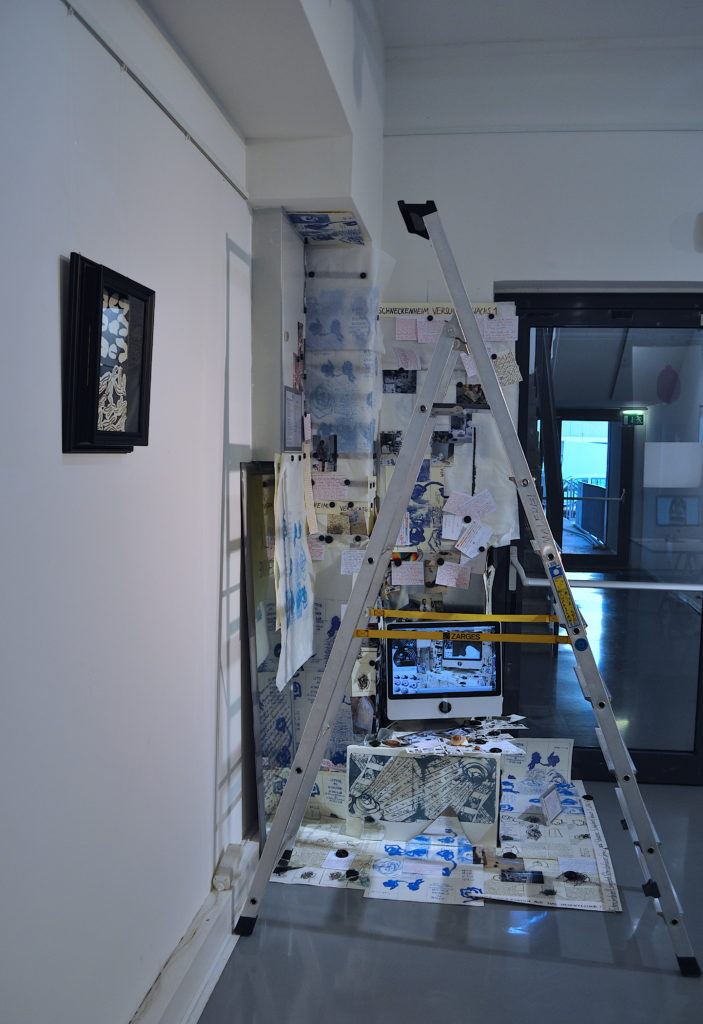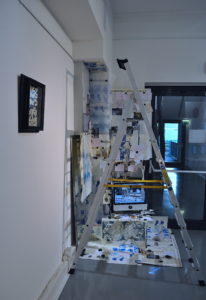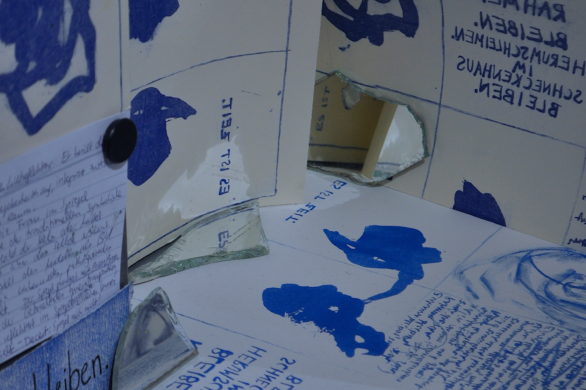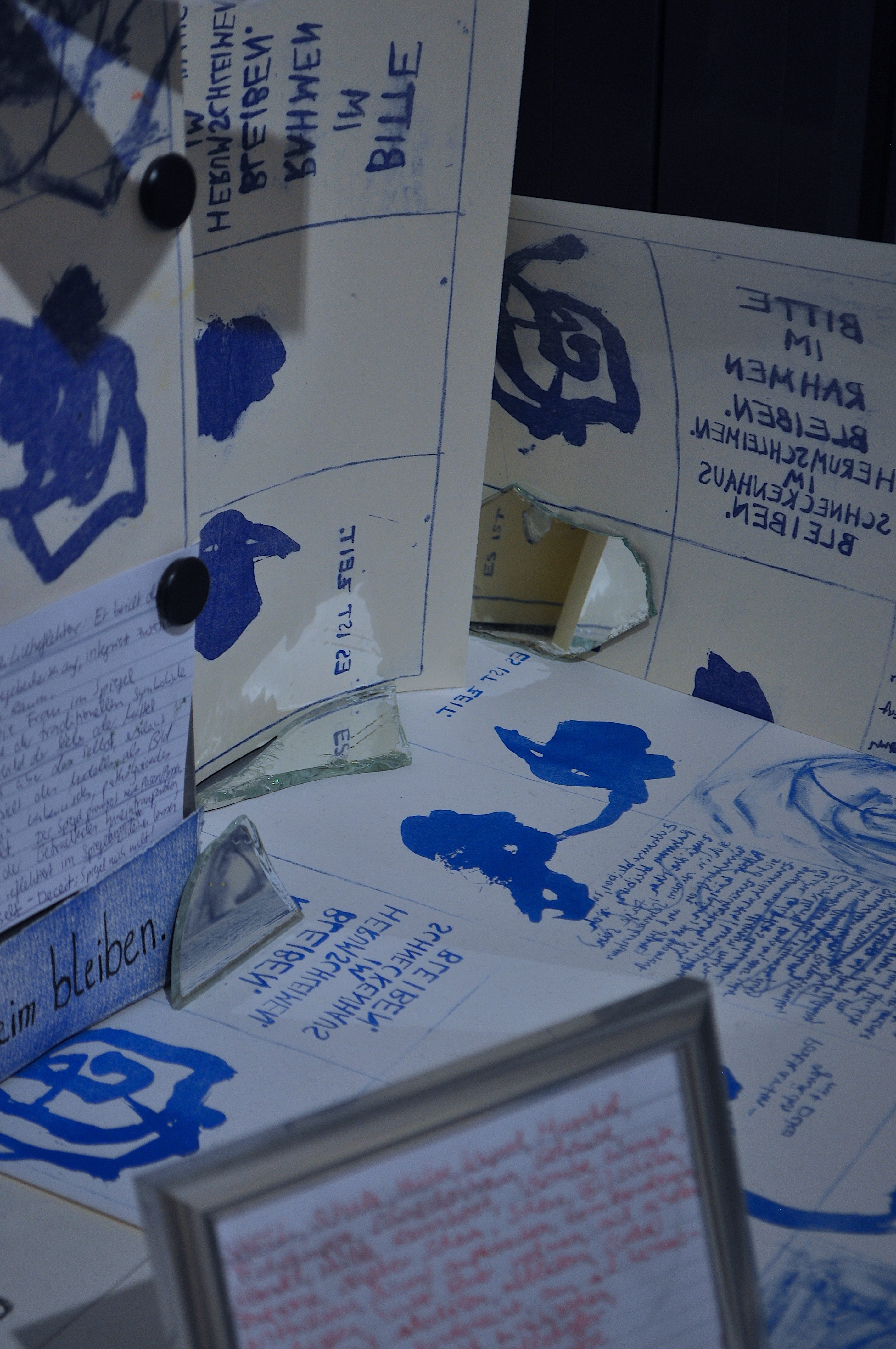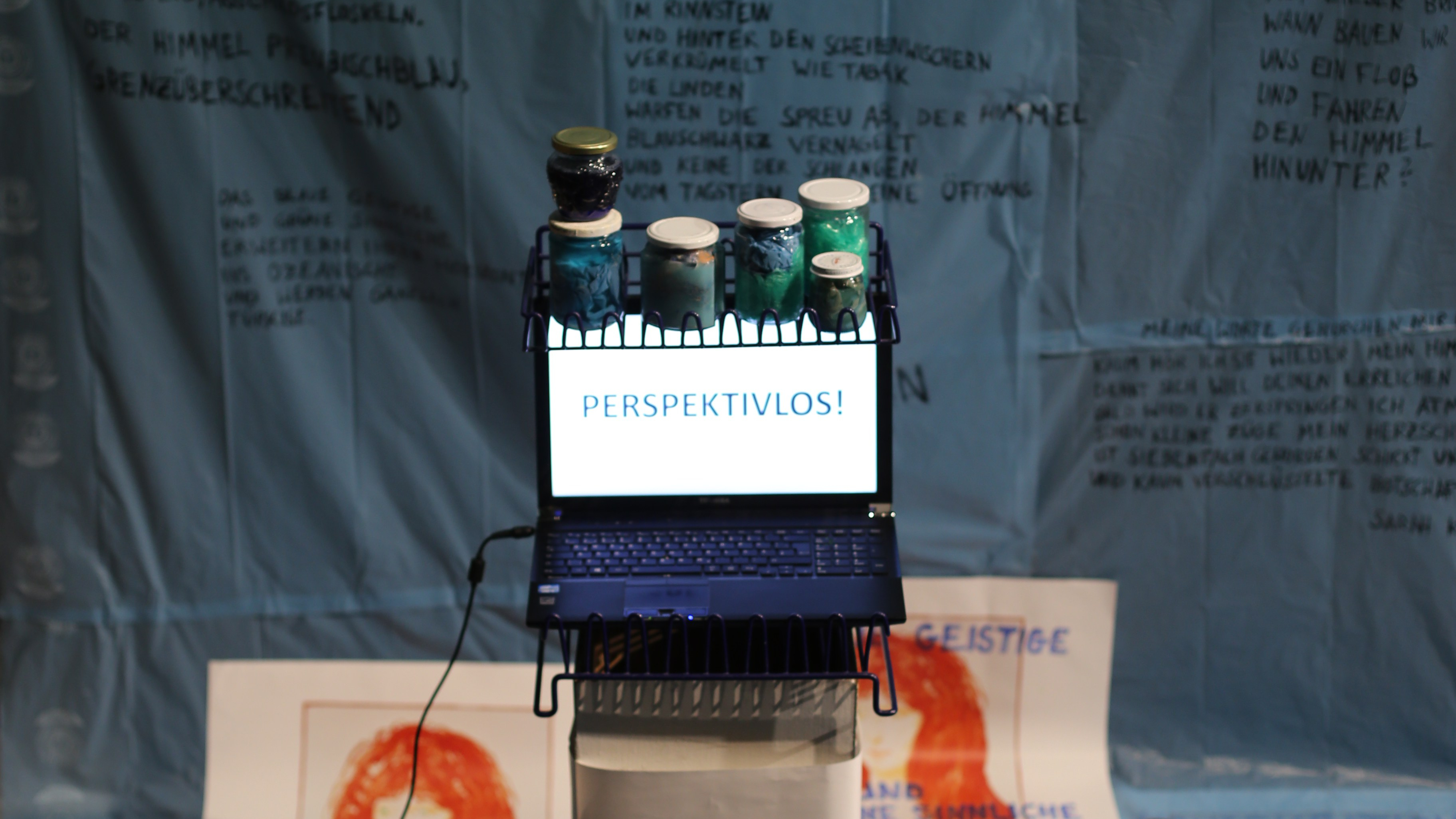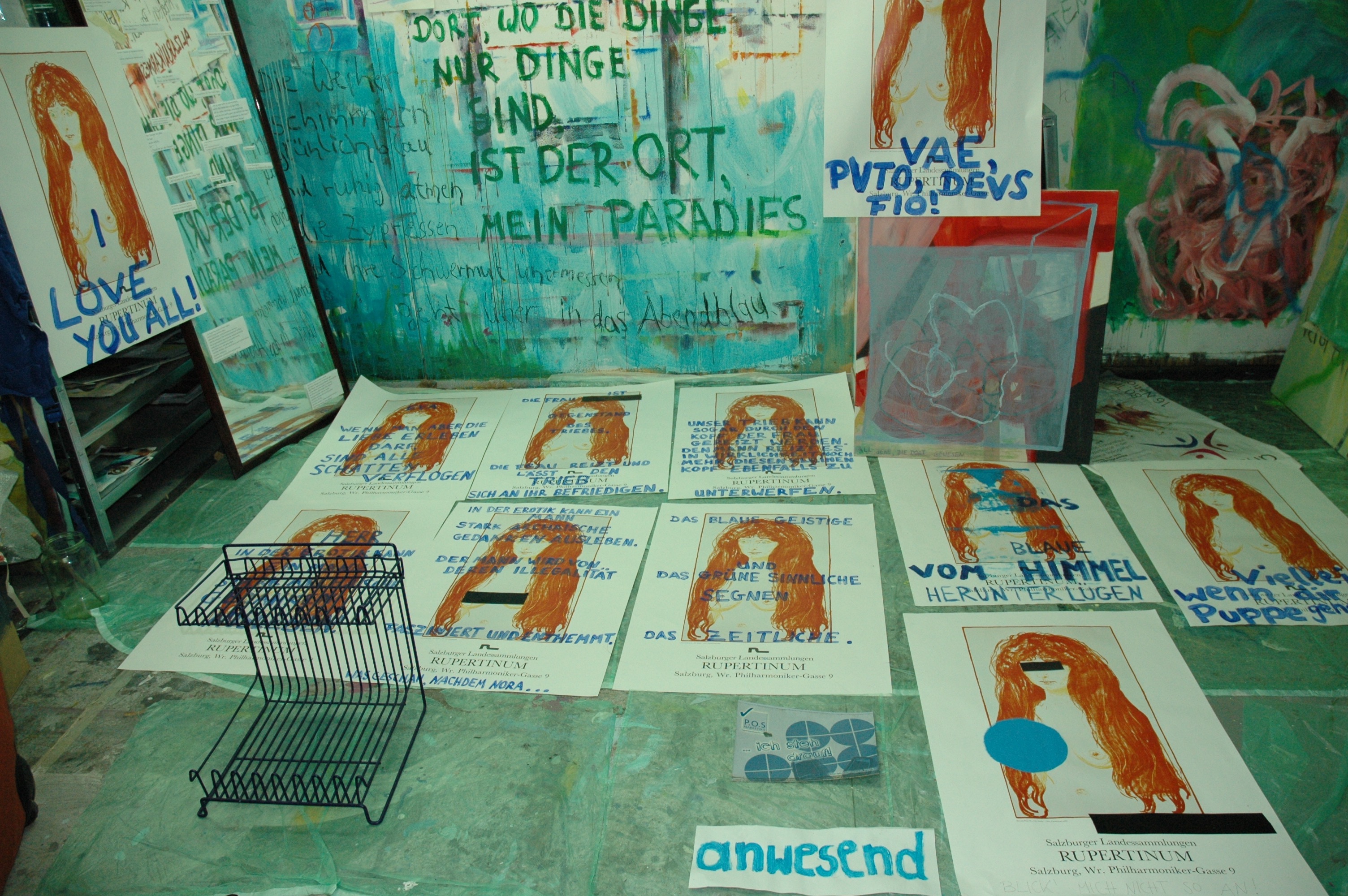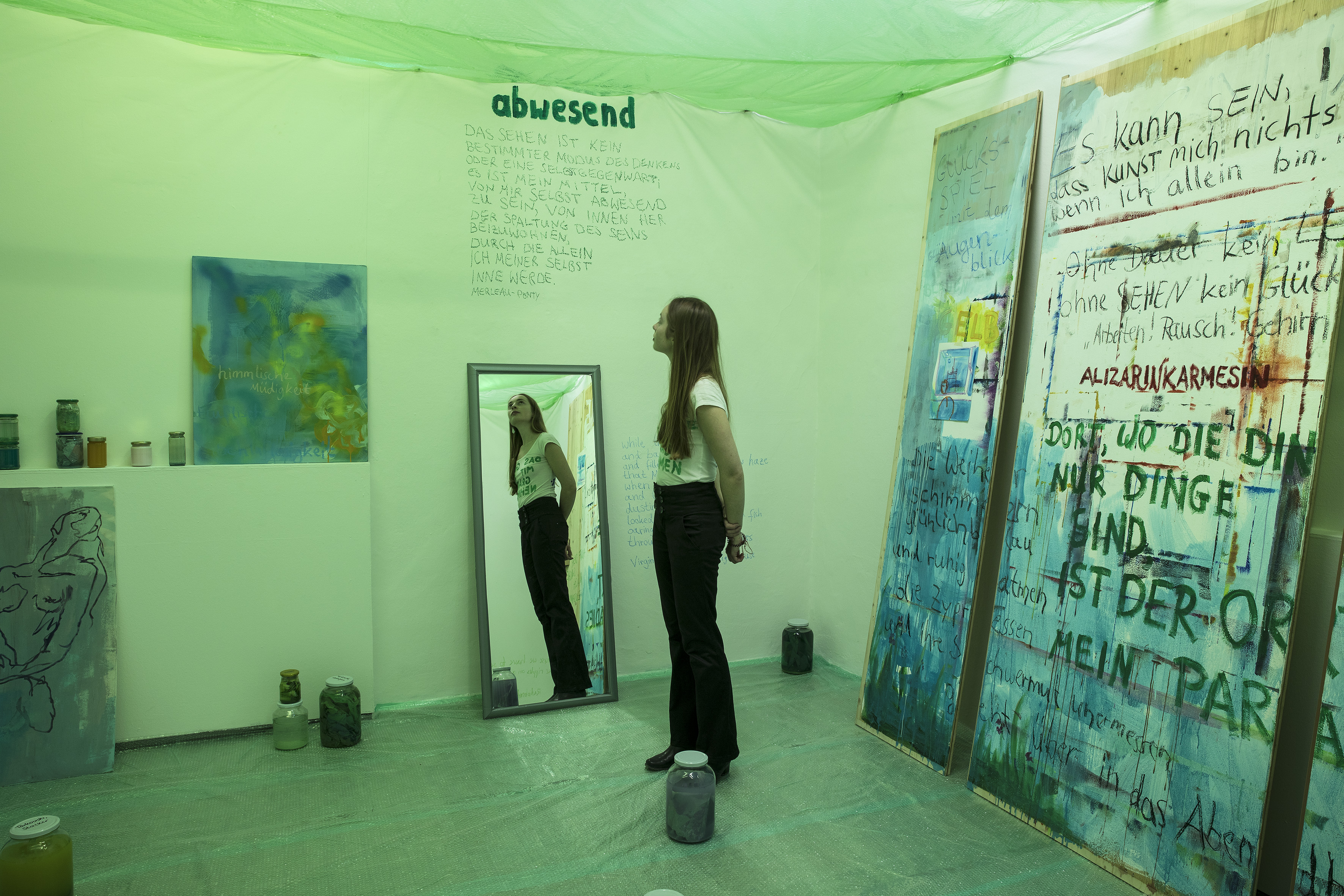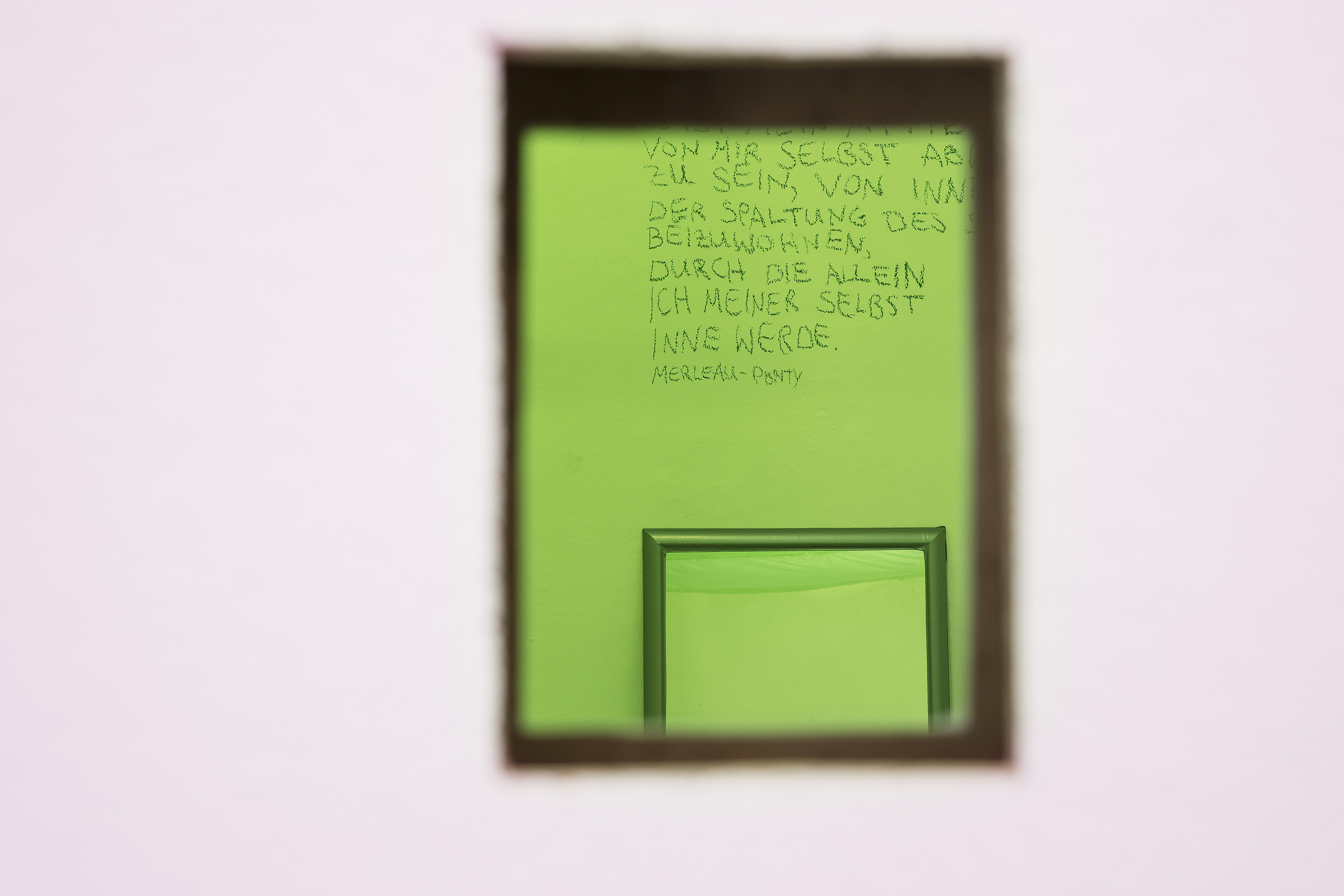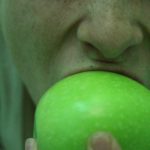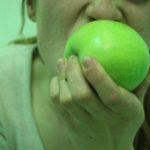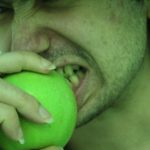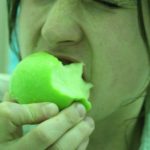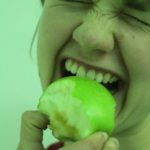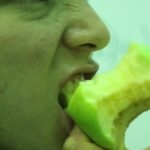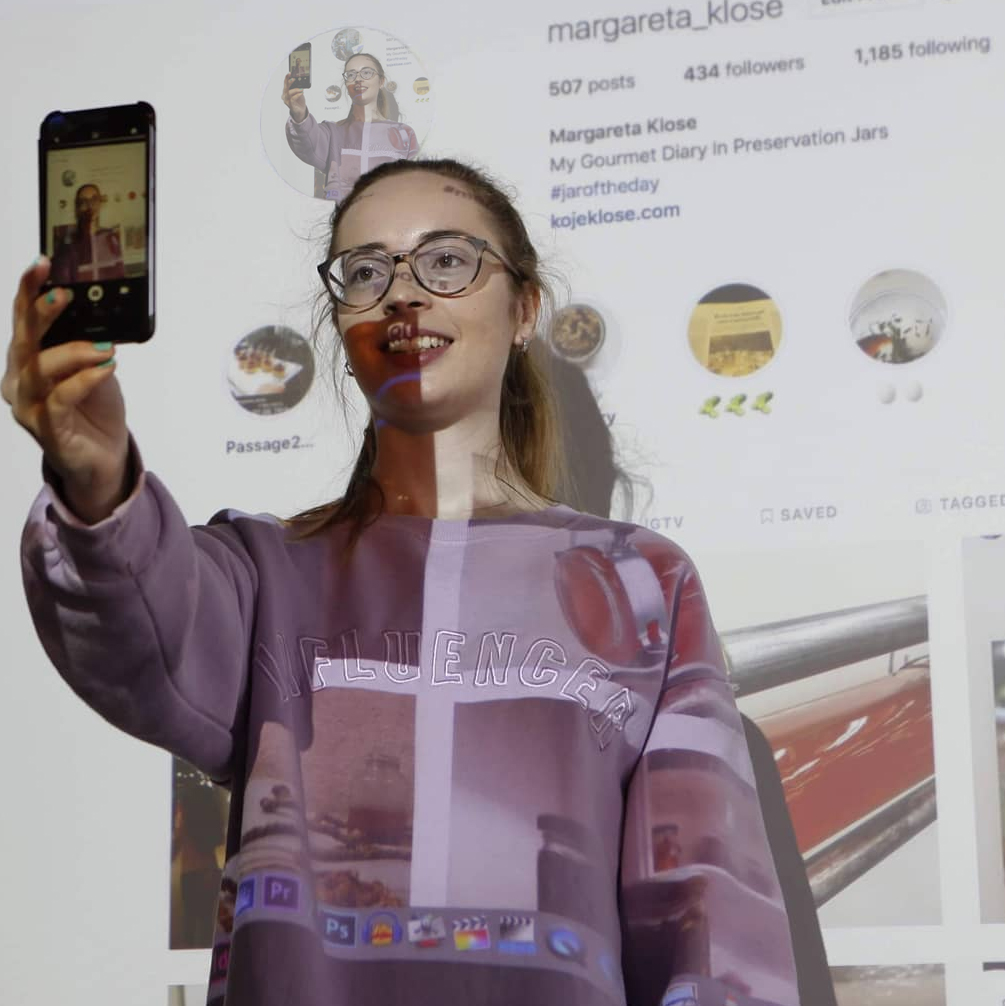
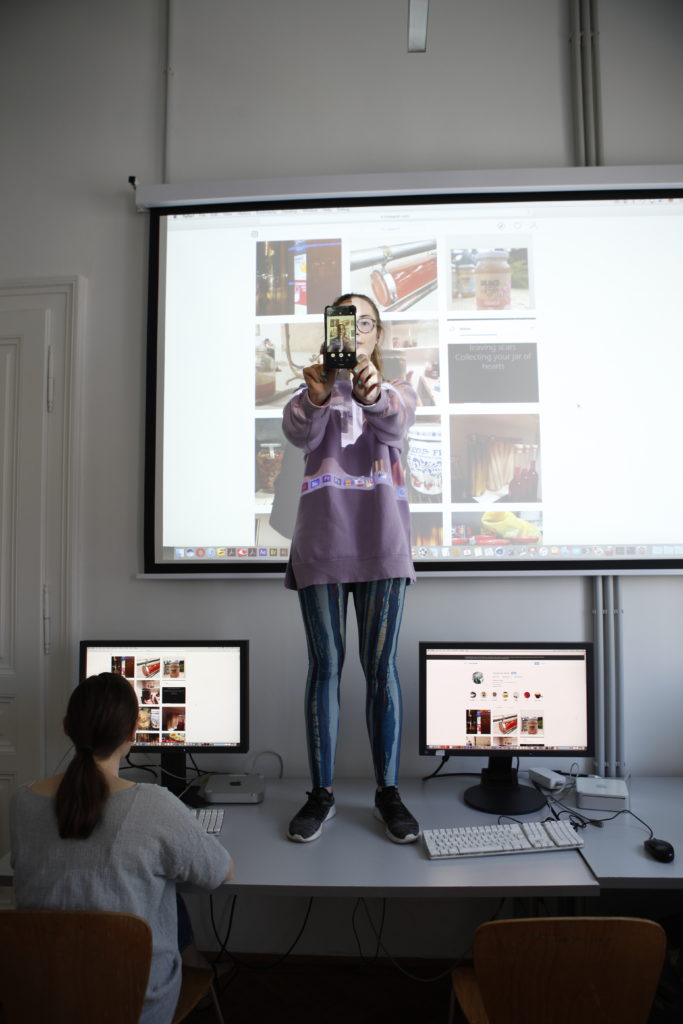
Photos: Eva Rybarova
Performance @TransArts @UniversityofAppliedArtsVienna
Artist and Sociologist Anna Weisser is picking the pickles of my pick list of pickles: Moving food Instagram pictures are projected on the Body which projects its own picture, the shadow, onto the medium, the wall.
Body, Floating Pictures and Technology coincide in the dialectical Image, the Photograph & Video and its Documentation and then Digitalisation on websites as presentation of a presentation circulating in the world wide web after the act.
https://www.youtube.com/watch?v=S3zHv9fvJWE&t=3s
How to participate in an image?
The medium is the image. The medium is the trace of itself.
While thinking about the documentality of food pictures, ecology movements and VEGANIZATION I am collecting Instagram pictures of „zerowaste“ vegan Influencer of generation Y and Z and NGOs. Public relations proclaiming to be „zerowaste“ disregard Instagram’s documental economic grid as well as digital waste that has grown exponentially over the last decade as storage of data has shifted to the online sphere to throw all of our recorded information into one big digital cloud of computers.
Computational photography: The lenses of contemporary phone cameras are tiny crap, so half of the data that is captured by the sensor is noise. An algorithm scans all other pictures stored on the phone or social media networks to clean the noise or to discern the picture from inside the noise.
„It analyzes the pictures you already took, or those that are associated with you, and it tries to match faces and shapes to link them back to you. By comparing what you and your network already photographed, the algorithm guesses what you might have wanted to photograph now. It creates the present picture based on earlier pictures, on your/its memory. This new paradigm is being called computational photography.“
Hito Steyerl, Proxy Politics: Signal and Noise, 1, in: e-flux journal #60, december 2014.
To participate in an image, rather than identify with it, would mean participating in the material of the image as well as in the desires and forces it accumulates.
I CAN’T BE YOUR HERO, BABY!
My new year’s resolution since 2018 is “My Gourmet Diary In Preservation Jars” #jaroftheday on Instagram while thinking about international food production and how gathering to eat and drink and circulating pictures of food can connect cultures and rituals from different times and places. I have frequently used food package products such as jars and foils to produce sculptures since 2013 with Nicole Wermers. The jar menu on Instagram invites to virtual window shopping and applies inventive approaches such as fermentation and pickles, creating vivid veggie and nutritious snacks, sweets, drinks. Through these, my Instagram menu explores waste-free food and drink preparation, the “gourmet”, and authenticity in relation to migration of foods and customs. Food is presented in still-lifes as representation of production, gender, class and self-representation. The documentality of these pictures interests me: how Instagram users create diaries, how these virtual pictures become documents and real physical entities, which create powers that extend human memory, and thereby sustain new complex forms of social order.
Since 2018 – as part of my Instagram “Gourmet Diary in Preservation Jars“ #jaroftheday inspired by Martha Rosler’s “Budding Gourmet“ – I am acting as veggie Zerowaste-Influencer @margareta_klose who collects like a sociologist, or better: jar-fetishist, followers and pictures of these containers that are transparent and between the public and the private, that circulate on the worldwide market. I collect and frequently post pictures of self-made food at home, dishes in restaurants, found pictures of lesswaste-influencers recycling their jars, shop displays while window shopping in cities. Regarding this strange hype surrounding the jar – which was called Mason jar in America, named after John Landis Mason who first invented and patented it in 1858 and Weckglas, patented in 1890s in Germany (einwecken=to pickle) and Rexglas in Austria (einrexen), “My Gourmet Diary“ explores the ideological processes through which food preparation comes to be seen as „gourmet“, how it is packaged and becomes a product of
national culture in the competitive world of international markets.
Instagram is a very interesting medium to observe as a hybrid of social networks like Twitter (Hashtags), Facebook (Home feed but only with pictures/videos, not friends but followers), Snapchat (Instagram Direct and Stories) and Pinterest (collecting and archiving found pictures). It is a virtual market space for mobile, visual and social communication: while window shopping you can visit 12 windows simultaneously on the page of a profile or business account or hashtag group. While scrolling up and down Instagram sharers, curators, creators and collaborators are themselves a digital human resource and product of Instagram’s circumstances and the Iconosquare-Brandindex. Instagram’s algorithm is controlling your home feed. The relational Computational Photography creates the present picture based on earlier pictures, on its memory.
Mein Neujahrsvorsatz seit 2018 ist My Gourmet Diary auf Instagram #jaroftheday. Dabei denke ich über internationale Nahrungsmittelproduktion und Lebensmitteltechnologien nach und über verschiedene Esskulturen. Seit Neujahr 2018 agiere ich als veggie Zerowaste-Influenza @margareta_klose, die wie eine Soziologin oder eher Glasfetischistin, Follower und Einmachfotos sammelt. Ein besonderes Anliegen ist mir dabei die Lesswaste-Generation Y und die Zerowaste-Generation Z. Dabei geht es immer ums Fermentieren und Konservieren als Ritual, das Kulturen weltweit verbindet. Fermentieren ist zur queer-feministischen künstlerischen Praxis geworden, wie das trans-nationale, interkulturelle Projekt Fermenting Feminism von Lauren Fournier zeigt. Seit 2013 konserviere ich Verpackungen und Malereiartefakte in Einmachgläsern als Skulpturen des Plastik-Anthropozäns, sowie seit 2018 Marmelade und Mixed Pickles im Zuge von My Gourmet Diary. Das Menü dieses Tagebuchs bietet Fermentiertes und Eingelegtes, Veggieprodukte und Veganes, Getränke und Snacks to go – zerowaste. Gourmet, Authentizität und Nationalisierung von Nahrungsmitteln durch Verpackungsdesign wird in Verbindung gesetzt zu Import und Export von Essen(skulturen). Fotografie auf Instagram wird als Stillleben zur Selbst-Repräsentation von Produktion, Gender und Klasse. Diese Dokumentalität interessiert mich: wie diese virtuellen Bilder zu Dokumenten und echten physischen Realitäten werden, die performativ auf das kollektive Gedächtnis und komplexe Formen sozialer Ordnungen einwirken. Instagram ist ein besonders interessantes Medium hierfür, ein Hybrid aus Twitter (Hashtags), Facebook (Pinnwand, aber nicht so Text basiert, Insta arbeitet nur mit Bildern/Videos, Followers, nicht Friends), Snapchat (Instagram Direct und Stories) und Pinterest (Bilder und Videos sammeln und archivieren). Instagram ist ein virtueller Marktplatz für mobile, visuelle und soziale Kommunikation: Während des window shoppings kann man bis zu 12 Fenster gleichzeitig sehen auf der Seite eines Profils, Business oder Hashtags. Beim Hoch- und Runterscrollen werden die User, Sharer, Curators, Creators und Collaborators selber zur digitalen Ressource der digitalen Machinen, Bots und Algorhythmen. Man wird eingerahmt in den Iconosquare-Brandindex. Instagrams Algorhythmus kontrolliert dein Home Feed.
Die Präsentation der Fotos ausnahmslos von Einmachgläsern demonstriert Content- und Containerprinzip, Logistik und kulturelles Kapital der Neuen Ökonomie, die auf Effizienz, Nationalisierung, Individualität und Humankapital zielt: Essen, den Körper, unsere Affekte, Träume, Wünsche – das Leben selbst.
